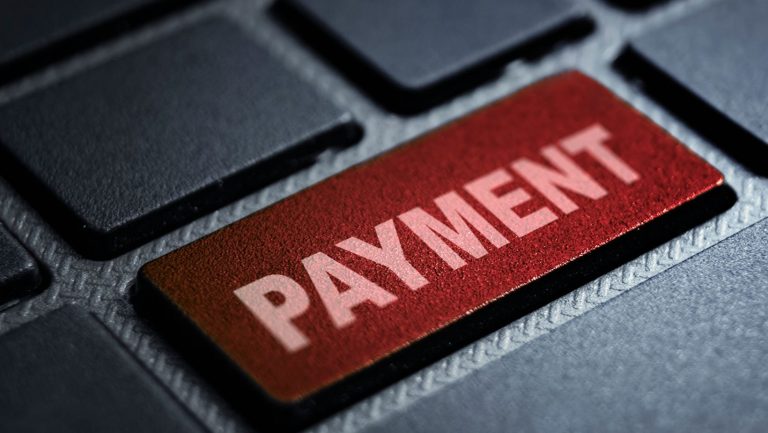
Looking for a straightforward and effective method to calculate discounts? No need to fret any longer!
We introduce the fastest and most straightforward method for calculating discounts to save you time and effort!
This article will instruct you on utilizing this system to obtain the greatest discounts.
How to calculate discount
Regardless of the store type or shopping season, figuring out your discount is simple. By grasping the terms and formula for calculating discounts, you can save both time and money while hunting for the best bargains. It’s crucial for smart shoppers everywhere to know how to calculate discounts!
Calculating a discount is simple if you have two crucial pieces of information: the original price and the discount percentage. These two figures allow you to determine the amount you’ll save off the original price by using multiplication and division. For instance, if a shirt originally costs $50 and it has a 20% discount, multiply 50 by .2 (which is 20% in decimal form). This calculation will show that after applying your savings, your final cost will be $40 (50 – 10 = 40).
Keep in mind that discounts are typically stated as a percentage, not a dollar amount. Therefore, you need to first determine the percentage before figuring out its monetary value at checkout. Once you understand this, calculating discounts will be a breeze.
How to calculate discount percentage
Knowing how to calculate the discount percentage is essential if you often aim to take advantage of sales to save money. The simplest way to figure out the discount percentage is to use a straightforward formula: divide the discount amount by the original price. This will give you the percentage reduction of an item. For instance, if an item originally priced at $50 is discounted by $10, you divide 10 by 50 and multiply by 100 to get the discount rate, which in this case would be 20%.
This formula’s benefit is that it allows for swift and straightforward calculations regularly, particularly when hunting for bargains or analyzing sales outcomes. Understanding how to compute discounts enables customers to make more knowledgeable purchasing decisions and manage their budget effectively. Simultaneously, businesses can leverage this method for cost optimization and efficient inventory management of their products or services.
Knowing how to compute discounts can empower shoppers to negotiate for lower prices and make more informed pricing choices. Always seize every deal accessible, conduct your personal investigation, inquire, and shop more wisely!
How to find discount percentage
Ever thought about how to calculate the percentage of a discount? Whether you’re shopping in a physical store or online, it’s crucial to know the exact amount you’re saving. Luckily, there are a few easy steps to help you determine this. One of the simplest methods to figure out your discount percentage is by using a calculator.
The initial step involves determining the original price and the sale price of the item. If an item’s price is marked down from its original cost, you can easily subtract the sale price from the original one. To find the discount percentage, divide this difference by the original cost. For instance, if an item originally priced at $100 is now available for $75 in a 25% off promotion, this formula can be applied: (100 – 75) / 100 = 0.25 or 25% discount.
This method can also be applied if you only know the sale or discounted price of a product. To determine your discount in this scenario, just subtract the discounted price from 1, then multiply the result by 100. Take our previous example where an item costs $75 with a 20% discount. You would use the formula: (1 – 0.8)*100 = 20%. This will provide you with your total savings in percentage form.
Keep in mind, there are numerous methods for calculating discounts. Identifying the most effective method for your circumstances will guarantee accuracy every time!
Percent discount calculator
Determining instant percent discounts can be complex, but the right formula and tool can make it easy. The most effective method to compute your percent discount is using a percent discount calculator. This online tool allows you to enter your original price and the discounted price to determine your final percentage saved. If the mathematics involved is complex, you might find a calculator capable of handling multiple discounts simultaneously, saving you both time and effort.
Utilizing a percentage discount calculator is a simple and reliable method to ensure precise discount calculations. It aids in accurately determining the results of any promotional codes or offers. This tool is particularly beneficial for business owners as it allows them to swiftly calculate discounts from sales and returns without resorting to mental arithmetic or physical calculators. In summary, a percent discount calculator simplifies the process of determining savings, guaranteeing accuracy each time.

How to calculate percent off
Working out discounts might seem tricky, but it doesn’t have to be! There’s a straightforward formula that can make it much simpler: (The Sale Price) / (The Original Price) x 100 = Percent Off. You can use this formula in any scenario where you need to figure out the discount being given.
To compute a 15% discount off a product, begin by identifying the initial cost of the item. In this instance, the original price is $20. Divide this number by 100 (the complete percentage) to get 0.2. Multiply this figure by 15 (the discount percentage) to get 2.5, which is the total savings. Subtract this from the original price of $20 to find the discounted price: 20 – 2.5 equals 17.5. Therefore, after applying the 15% discount, the new price of your product would be just $17.50!
Using this method, you’ll always be aware of the exact amount of money you’re saving by determining the percentage off any product or service before deciding to buy it!
How to calculate 20 percent off
Determining your discount has just become simpler. If you’re curious about how to figure out a 20 percent discount, the solution is to use a basic formula that can be applied to any cost. This uncomplicated approach will consistently give you precise results each time you shop.
Begin by multiplying the original price by 0.2 to determine the total discount amount. So, if an item is priced at $60, multiplying by 0.2 will give you $12, which is the total amount you’ll save in a 20 percent off sale.
The subsequent stage involves deducting this sum from the initial price: in this instance, subtracting $60 by $12 to get $48. This final figure is the discounted price of your item – in this scenario, it would be $48 after applying a 20 percent discount. You can replicate this process with any discount percentage and any original price, enabling you to conveniently and precisely compute your savings while shopping!
Discount calculator online
Sometimes, figuring out discounts can be complex and you might be uncertain about the final price. To simplify matters, utilize an online discount calculator to do the work for you. Manually doing the calculations can be time-consuming and may lead to errors that could cost you financially.
Using an online discount calculator can expedite and streamline the process of calculating your savings from any given discounts. This user-friendly tool only requires a few simple pieces of information such as the original price, the discount percentage, and the sale price. The calculator performs all the calculations automatically and provides immediate results, eliminating the need for you to do any subtraction or division calculations manually.
While discount calculators are readily accessible, many do not live up to their claims of user-friendliness or accuracy, potentially resulting in pricing errors. Therefore, it’s beneficial to seek out calculators that have received proper reviews from industry experts, such as those approved by the Specialty Coffee Association of America (SCAA). These calculators not only yield more accurate results, but they often come with additional beneficial features, like the capability to compare products side by side before making a purchase. Consequently, investing in a dependable online discount calculator is a worthwhile endeavor!
How to calculate a discount
One of the simplest methods to save money on regular purchases is by calculating a discount. To do this, start with the original price and use the discount percentage as a multiplier. For instance, if an item initially costs $100 and it’s marked 10% off, you’d apply 0.10 as the multiplier to find your new discounted price. By multiplying 100 by 0.10, you can quickly determine your new discounted price – in this case, it would be $90.
It’s beneficial to have a specific formula on hand before making any purchase while shopping for discounted items. This allows you to verify the store’s accurate estimation of your savings compared to the original price. This simple formula facilitates quick calculations of any potential discounts on various items or services, making it easier for shoppers worldwide to grab great deals without spending too much time calculating their savings.
Omni discount calculator
The omni discount calculator is a swift and straightforward method to determine your expected discount when buying items. All you need to do is input the price of your item and the percentage off, and the calculator will immediately calculate your savings. This tool is beneficial for maximizing the benefits of sales, particularly when shopping online where discounts might not be clearly advertised.
The omni discount calculator is a versatile tool applicable to virtually any product, from groceries to electronics. It serves as an effective budgeting and money-saving method. This tool allows you to compare the prices of items before making a decision based on your needs or budget constraints. Moreover, it helps determine which item or service is most suitable for you without having to shell out the full price every time.
The omni discount calculator is a time and money-saving tool that computes discounts promptly and precisely. It’s an invaluable aid whether you’re product researching or attempting to shop wisely while managing your budget. This discount calculator is a potent tool that’s always accessible.
Discount price calculator
The simplest method for calculating discounts is to utilize a discount price calculator. Numerous online calculators are available, making it effortless to determine your savings. Just enter the initial price and discount rate, then press enter to see your new discounted price.
This becomes particularly handy when shopping online or comparing multiple items with various sale prices. It enables you to swiftly benchmark similar items when planning your purchases. For instance, if you have two pairs of jeans each on sale for $50 but one offers a 15% discount while the other offers a 20% discount, a discount price calculator can help you identify which pair offers the most savings.
Moreover, this tool doesn’t necessitate any specialized knowledge or mathematical skills, making it perfect for those who need assistance in making cost-efficient decisions without investing excessive time in complex calculations. Purchase a user-friendly discount price calculator today to prevent unnecessary spending and to avoid the hassle of figuring out savings independently!

How to take percentage off
Understanding how to calculate a percentage discount is crucial for frequent shoppers or deal-makers. Although discount calculations may seem intimidating, particularly when they involve complicated mathematics, the process doesn’t need to be complex. The simplest method to determine your discount is by applying the percentage equation, which only needs two inputs: the amount you’re spending and the discount percentage offered.
Assuming you’re shopping for a new shirt priced at $200 and you’re given a 10% discount. To determine the amount you will save on this purchase, just multiply 0.10 (10%) by 200 (the total cost).
$200 multiplied by 0.10=20
The shirt will ultimately cost you $180, given that you saved $20 thanks to a 10% discount. Thus, to ensure accuracy when figuring out discounts, always use the basic percentage formula!
Price discount calculator
A straightforward method for determining your price discount is by using a price discount calculator. Such calculators enable you to swiftly and precisely ascertain the discount amount you can receive off a list price. This approach is notably simple and effortless compared to manually calculating discounts.
Using a price discount calculator is simple. You just need to enter the original price of the item, along with any coupon codes or promotional discounts that you have. The calculator will then calculate your total savings based on the information you have provided. For instance, if you’re purchasing a laptop and have a 10% off coupon code, the calculator will automatically determine your total savings once you input the details.
Discount calculators can streamline the process of tracking savings and save you time when comparing prices. The same tool can be used to compare prices across different websites, ensuring consistent calculations and enhancing the overall shopping efficiency. Moreover, some calculators can show potential savings in various currencies, facilitating comparison shopping on international platforms.
Discount price calculators are a user-friendly tool that offers precision and ease in calculating discounts from original prices. Whether you’re at home or out and about, this handy instrument aids in optimizing possible savings and supports informed spending choices in general!
Sale percentage
When shopping for deals, the simplest way to determine the sale percentage is by dividing the discount by the original price. Understanding the sale percentage is beneficial in deciding whether to purchase now, as it’s crucial to comprehend the actual savings. Just divide the discount by the original price. The outcome will be a decimal, which needs to be multiplied by 100 to convert it into a percentage. For instance, if an item’s price is reduced from $100 to $80, divide 80 by 100 and then multiply the result by 100. This shows that a 20 percent discount has been applied to the item’s original price ($20 divided by $100 multiplied by 100).
Calculating sale percentages can sometimes be more complicated than just dividing the discount by the original price. Some discounts might come with additional conditions or may require a combination of coupons, rebates, or store credit cards. Therefore, it’s crucial to understand all these factors before deciding on a purchase. This will help accurately determine the actual savings that can be achieved, considering any existing rebate program at the chosen store location. The overall savings can be affected by the specific sale percentage for items on special promotion at the time.

How to calculate sale price
Determining sale prices by calculating your discount is a straightforward process, which enables customers to maximize their shopping experience. The fundamental formula for figuring out sale prices is simple: deduct the discount percentage from the original price. Ensure this percentage is expressed as a decimal, so a 20% discount becomes 0.2; multiplying this figure by the original price will yield the discounted amount.
For instance, consider you have an item costing $100 that’s discounted by 20%. To find the new price, you must multiply 0.2 (which is the decimal equivalent of 20%) by 100 (the original price), which gives you $20. This figure is the amount of the discount and therefore, it would be the final price of the item. It’s crucial to verify your discount calculations to prevent any confusion or discrepancy between what you intended to buy and what you actually bought.
Remember, when determining sales prices, the higher the discount percentage, the greater your savings will be. Therefore, always seize any offers while shopping! By understanding how to convert percentages into decimals and doing a few easy calculations, you can effortlessly figure out your discounts each time and enjoy more savings!
How to calculate 30 percent off
If you want an easy and quick method to compute 30 percent off a price, there’s a solution. The optimal way to calculate 30 percent off is to start by multiplying the original price by 0.3 to give you the savings in decimal form. Then, multiply this figure by the initial cost to determine the discount. For instance, if a product costs $50, you multiply $50 by 0.3 to get 15. However, the next step is incorrect. You don’t need to multiply 15 by 50 again, because 15 is already the amount of discount. So, for a $50 item, a 30% discount would mean you’re saving $15.
This technique is effective for calculating savings on any item or service with a 30% discount, provided you are aiming to ascertain the amount saved. However, bear in mind that not all discounts may be applicable due to conditions or restrictions like limited offers or store discount policies. Therefore, it’s crucial to verify these specifics before making a purchase.
Discounted price calculator
Figuring out discounted prices can sometimes be a tiresome task, but it doesn’t necessarily have to be. A discounted price calculator can help you swiftly determine the precise amount you need to pay for any product. You just require the initial price and the discount percentage, and you can receive results instantly.
Typically, discounted price calculators are available as online tools or smartphone apps. The calculation process is straightforward: start by entering the original price of the item, then choose your preferred discount rate using user-friendly buttons or sliders. To get your new, discounted price, simply click “calculate”.
Using a discounted price calculator is incredibly handy as it removes any uncertainty in hunting for a bargain. It’s also an effective method to verify if a deal is genuinely as beneficial as claimed! Most of these calculators also let you tweak factors like taxes and shipping charges, enabling you to reach a precise estimate.
Utilize a discounted price calculator today to save both time and effort! This convenient tool makes calculating discounts a breeze by instantly revealing your savings on purchases. Get yours now for precise calculations every time!
How to find sale price
If you’re on a quest for the simplest method to calculate your discount, then you’ve arrived at the correct destination. Whether your shopping list includes groceries, health and beauty products, clothing or furniture, it’s beneficial to know how to identify the sale price. Here are some easy steps that will swiftly assist you in pinpointing a bargain:
First, comprehend the concept of ‘sale price’. This refers to the final price of a product after applying a discount. The sale price of an item can be determined by deducting the discounted sum from the initial price. For instance, if a pair of shoes costs $100 originally, and a 25% discount is given, then the sale price would be $75.
Next, determine the discounted amount by calculating the discount percentage against the original price. You can do this by multiplying the percentage value with the original price, for example, 25% x $100 = $25. Then, subtract this value from the original price ($100 – $25 = $75) to find the new total, which is the sale price.
Finally, ensure to compare your computed sale price with that of similar products or websites selling them online before you finalize your purchase. This way, you can confirm that you’re getting your money’s worth! If you find it challenging to calculate discounts on your own, an online calculator can simplify things for you! Use our calculator today to discover the potential savings you could enjoy!

How much is 20 percent off
Determining the amount of money discounted when asked “how much is 20 percent off” can be challenging, but it can be simplified with a few steps.
To begin with, calculate the discount for the item by multiplying its price by .20. This will immediately provide the total discount for the item. For instance, if the item costs $100, multiplying it by .20 will result in a $20 discount.
Another way to calculate a 20 percent discount is to first figure out 10 percent and then double it. To calculate 10 percent, divide the item’s price by 10. For instance, if an item costs $100, dividing it by 10 gives us $10. Doubling this amount gives us the 20 percent discount, which in this case would be $20.
Keep in mind that if you need to compute a discount greater than 20%, just multiply your total discount by the percentage you want (for instance, for a 40% discount, multiply by .4). Alternatively, calculate 10% and keep adding it until you get to the percentage you want (for example, add 10% four times for a 40% discount). Understanding how to determine a 20% discount can assist you in saving money when shopping both online and in-store!
How to discount a price
Determining the right price discount can be challenging for businesses. Incorrect discounts can result in significant financial losses over time. However, with the use of a simple formula, calculating the amount to deduct from your product or service’s usual price can be done swiftly and effortlessly.
Begin by gathering crucial details to save time and avoid errors. This includes the original cost of an item, and any available promotional codes or discounts. Once you have this data, you can start figuring out your discount by dividing the discount amount by the original price and then multiplying the result by 100.
For instance, consider a product with an initial list price of $100, but is now offered at a 15% discount. This means that dividing 15 by 100 gives us 0.15. Multiplying 0.15 by 100 gives us 15%, the discount rate. To calculate the discounted price, we subtract 15% of $100 from the original price, so $100 – (0.15 x 100) = $85. So, after the discount, the product now costs just $85 instead of the original $100, making it a much more enticing offer for customers seeking excellent value for their money.
How to do discount
When dealing with discounts and special deals, it’s crucial to understand how to calculate the money you’ll save on your purchase. Being knowledgeable in correctly calculating discounts can simplify shopping and enable you to maximize your budget. Here’s an easy guide on mastering discount calculations!
Discounts are typically presented as a percentage-off or a dollar value off. To determine the discounted price of an item, begin by subtracting either the percentage or dollar amount from the original price of the item. For example, if a $20 item is on sale for 10% off, subtract 10% ($2) from the original price to get the discounted price of $18. Similarly, if the discount is $5 off, subtract $5 from the original price of $20 to get the discounted price of $15.
To evaluate the sale prices and confirm if you’re securing a beneficial deal while shopping online or in physical stores, apply this formula that considers different proportions of sale prices against original costs of the items under comparison. If all other factors such as quality, shipping costs remain the same across the compared items, then a lower percentage-off sale price offers greater dollar savings than higher percentage-off sales prices. Keep this guideline within reach and recall it while shopping to optimize your savings every time!
How to calculate 10 percent off a price
Being able to work out a 10 percent discount is a handy skill when you’re shopping for sale items or making minor purchases. By calculating correctly, you can spot good deals on things like clothes, furniture, and electronics, or just understand your savings on a smaller buy. Here’s a simple step-by-step guide to help you determine how to take 10 percent off any price.
To effortlessly calculate a 10 percent discount on any price, initially multiply the given price by 0.1, which represents 10%. For instance, if an item costs $100 and you want to calculate 10 percent off, multiply 100 by 0.1 to get $10, which is the reduction from the original cost. Alternatively, you can subtract 10 from the initial cost, which will also result in $90, indicating a 10% reduction from the original price.
If multiplication and subtraction are challenging for you, you can calculate a 10% discount by first dividing the original price by ten and then deducting that figure from the initial price. Using our previous example of a $100 item, divide 100 by ten to get 10. Then, subtract this amount from $100, resulting in a discounted price of $90. This is another method of accounting for a 10% reduction in cost.
Regardless of the strategy that suits you best, these techniques can be applied in any situation where discount calculation is necessary. Be it online shopping or in-store purchases, understanding how to calculate percentage discounts can aid in ensuring you never overspend!
Sales discount calculator
Are you seeking a convenient method to compute a sales discount? A sales discount calculator is a handy tool designed to help you figure out your potential savings from a markdown. Regardless of whether you’re planning to buy items in large quantities or just snag a single item at a massive discount, having this tool at your disposal can greatly improve your shopping experience.
A sales discount calculator is advantageous as it comprehensively factors in every variable required to determine the correct amount. It enables you to input the item’s initial price and modify it based on any relevant discounts. These discounts may include coupons, storewide sales, loyalty schemes, and more. Additionally, it can consider any tax implications associated with each particular purchase if needed.
By using this calculator, you can gauge the regular savings you’d accrue from these deals, aiding you in prioritizing purchases or planning for future ones based on anticipated savings. Moreover, comprehending the money saved through these discounts can be beneficial in budgeting for future costs or savings objectives.
Having a sales discount calculator is incredibly useful for quickly determining the savings on any purchase with discounts and promotions. Therefore, it’s beneficial to keep one accessible whenever possible!
Sale discount calculator
Would you like a simple and efficient way to determine your savings at a store using a sale discount calculator? This handy tool assists shoppers in figuring out their potential savings at discount-offering stores. It’s crucial for the shopper to be aware of the discount percentage for an accurate calculation of their savings.
To utilize this calculator, customers must input the initial price of a product, the sale percentage, and the quantity they want to buy. The calculator determines the final cost by considering the discount. Such data can be beneficial for deciding the optimal place to shop and find discounts.
Also, shoppers should keep an eye on extra promotional offers from specific retailers or manufacturers as this could lead to further savings on their purchases. So, if you want a convenient method to calculate your savings from any promotion or discount, consider using a sale discount calculator today!
Discount sale calculator
Determining your discount sale can be a simple process with the appropriate tool. An invaluable tool for this purpose is a discount sale calculator, which can rapidly and accurately compute discounts for your online shopping. This tool allows you to input the cost of the product and the discount percentage being offered, providing immediate information on your savings. Consequently, it is an excellent method for comparing products and securing the best deal.
Utilizing a discount sale calculator not only provides the benefit of saving money when shopping online, but also saves time by eradicating the requirement to hunt for offers or calculate each deal’s discount. This tool provides a fast way for shoppers to visualize their potential savings and make an educated buying decision prior to checkout.
Consider using a user-friendly discount sale calculator to determine the best offer or promotion for your needs. This tool will provide immediate answers about potential savings and convenience. Whether you need it for personal use or for assessing business opportunities, this handy instrument promises impressive results with little effort required.
How to do discounts
Comprehending discount application is crucial for the efficient and profitable operation of a business. The computation of discounts might differ based on the nature of your transactions, however, there’s a simple method to apply these discounts and swiftly obtain precise results.
A simple formula that considers the pre-discount cost of items is the easiest method for calculating a discount.
Firstly, decide the discount percentage you want to apply to your items. Express this percentage in decimal format. For instance, a 10% discount is represented as 0.10 in decimal form. Subtract this number from one (1 – 0.10 = 0.90). The result, 0.90 in this case, is the discounted rate you’ll use to calculate a discount on your goods or services.
For instance, consider an item priced at $100 before any discount. To calculate the price after a 10% discount, you would multiply 0.90 by 100 (i.e., $100 x 0.90 = $90). This results in a discounted price of $90. This formula can also be used for online shopping to accurately determine your total savings from each transaction, thereby helping you budget for future purchases.
We trust that this guide has aided in making discount calculations easy and accurate for you!
How to take 10 off a price
Calculating a discount of 10 from a price is as simple as subtracting 10 from the original cost. The result you get will be the price after the discount. For instance, if your item costs $30 and you want to subtract 10, you just take 10 away from 30, which leaves you with a discounted price of $20.
In certain situations, like handling percentages or non-integers, computations might be slightly complex. When subtracting 10 from a percentage-based price, first multiply the percentage by 0.9 to calculate the total discount amount. This figure can later be added back to the subtracted sum after you’ve calculated the discount, avoiding any additional work. For example, if your pre-discount percentage is 23%, inputting 23*0.9 will result in a post-discount value of 20.7%, rather than manually inputting 20%.
Shopping can become a breeze by adhering to these tips for calculating discounts when deducting 10 from prices! Regardless of whether you are dealing with high or low numbers, obtaining a discount becomes quick and effortless when you simplify the fundamentals of subtraction or multiplication into easier tasks.
Discount calculation online
Online discount calculation is a simple method to conserve money while shopping. It helps you determine the precise amount you need to pay for a product and how much you can save from purchasing it. However, it’s crucial to remember that not all discounts may apply, as some may be subject to specific limitations or restrictions. Hence, it’s advisable to be aware of any applicable qualifications and verify your eligibility before making a purchase when calculating a discount online.
To utilize online discount calculation, the initial step is to determine the original price of the item and any potential discounts that may apply. After establishing the original price and discounts, deduct the discounts from the original price to get the discounted price of the item. Additionally, take into account other elements like shipping fees or coupons, as they might influence the item’s total cost.
Discount calculators can be an invaluable tool for shoppers, providing a swift and simple way to calculate savings and access exclusive deals, without the need for manual searching. All customers need to do is enter some basic information like the original price of the product and any relevant discounts, to instantly determine the exact amount they’ll save. Armed with this information, customers can pinpoint the best deals in a matter of seconds!
How to figure out discount percentage
Understanding how to calculate discount percentages is a straightforward process that enables you to precisely determine the discount you’re receiving on any product. Whether you’re buying clothes, electronics or groceries, grasping the idea of percentages lets you figure out the discount rate on an item and assess if the purchase is worthwhile. The simplest method to compute the discount percentage is by executing a basic calculation: subtract the sale price from the original price, divide this by the original price, then multiply by one hundred.
For instance, let’s say a dress initially cost $100 but is currently on sale for $50. In this case, you would calculate $50 minus $100, which equals -$50. You then divide -$50 by $100, getting -0.5. Multiply this by 100 to convert to a percentage, and you get -50%. This means the dress is now 50% off its initial price! You can apply this formula to any item to determine its discount percentage.
When handling complex discounts involving multiple percentages, employ a calculation that considers all discounts. First, sum up all the percentages and subtract this from 100 (the total), then multiply this result by either the original or discounted price. For example, if you have two 20% off discounts, add them together to get 40%, subtract this from 100 to get 60%, and finally multiply this by either your initial or reduced price. This method guarantees accurate calculation of your total discount every time!
Discount calculators online
Utilizing online discount calculators is one of the simplest methods to determine your discount. These calculators enable you to efficiently input your preferred percentage and the item’s original price, producing a discounted price. Online discount calculators spare you from the time-consuming process of manually computing discounts every time they are required.
Discount calculators prove extremely useful for novices in discount calculations or those with limited mathematical abilities. These calculators merely require basic information like the original price and percentage off, and they handle the rest. The discounts can vary from a modest amount on specific items to massive sums on big-ticket purchases such as cars or real estate.
Regardless of the size of your purchase, properly calculating discounts can significantly contribute to long-term savings. Therefore, it’s crucial to comprehend how they function and be aware of the tools available for accurate calculations. Utilizing online discount calculators can ensure that your buying decisions are grounded in precise prices and real savings.
How to take 10 percent off of a price
Mastering the skill of discount calculation is crucial in business and can significantly impact your profit margin. The process of deducting 10 percent from a price is fairly simple and can be applied to a variety of business deals. To perform this calculation, just multiply the price by 0.10 or divide it by 10. This gives you the discount amount, which you can then deduct from the original price.
For instance, if an item costs $100, you would calculate 10% of this price by multiplying 100 by 0.10. This gives a discount of $10. Subtracting this discount from the original price of $100 gives the final discounted price of $90.
You also have the option to discard this method if it doesn’t align with your goal or doesn’t yield the desired outcome. For example, if a product is priced at $97, applying a 10% discount by multiplying it by 0.10 might not be beneficial due to the inevitable rounding up or down of decimal points for the addends involved in the calculation. In such scenarios, an alternate yet effective approach to determine a 10% discount on a given price is to deduct 1/10th of the original price (where 1/10th signifies 10%). Therefore, if a product costs $97, reducing it by 1/10th (approximately nine dollars) would yield a new total cost of eighty-eight dollars. Decimal points may again cause this to round up or down to either eighty-seven or eighty-eight dollars.
Correctly calculating discounts can save time and money in the long run. This should be considered not only when determining the percentage off an item due to sales promotions, but also when calculating bulk order discounts for materials used in business production processes. However, the best method largely depends on individual preference regarding the calculation method used to determine these discounts.
How to do discount math
Calculating discounts may appear complicated, but it’s actually fairly straightforward. The secret to accurately determining your discount is recognizing the distinction between a dollar amount off and a percentage off. Once you grasp these ideas, you’ll be able to effortlessly calculate how much you’ve saved.
Discount: This refers to the reduction in price that a store offers for a product, for instance, “$15 off this product”. To determine your total savings, just deduct the discount from the initial price.
Discount Percentage: Instead of giving a fixed dollar amount as a discount, most stores provide a discount based on a percentage, for instance, “25% off this item”. To compute your total savings with a percentage-based discount, you need to initially convert the percentage into a decimal by dividing it by 100 (for example, 25 divided by 100 equals 0.25). Following that, multiply this decimal value by the item’s original price (for example, $23 multiplied by 0.25 gives you $5.75). Lastly, deduct this amount from the original price to find out your total savings ($23 minus $5.75 gives you $17.25).
Percentage calculator discount
Calculating Your Discount
Understanding how to calculate a discount can assist you in making savvy shopping choices and conserving money. In terms of mathematics, a discount is a type of proportion and its calculation is simple if you comprehend the provided information. With fundamental arithmetic, the process of calculating discounts has become effortless.
The formula to calculate the discount percentage is:
Discount Amount = Original Price x Percent Discount
For instance, if you purchase a shirt initially priced at $25 but now has a 20% discount, the calculation would be:
Discount Amount = 25 x .20 = 5$
To compute the discounted price, simply deduct the discount value from the initial price. For instance, if you subtract 5 from 25, your shirt’s new price is 20$.
To transform fractional discounts like ¼ into percentages, simply divide the numerator by the denominator and then multiply the result by 100.



